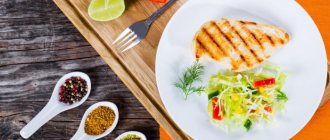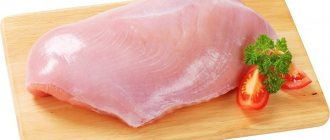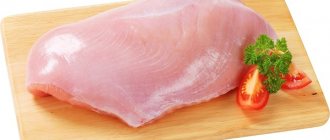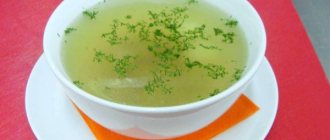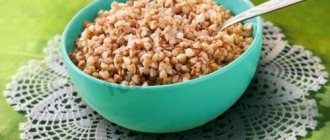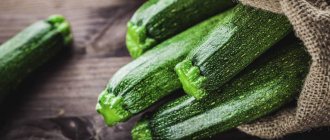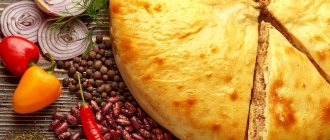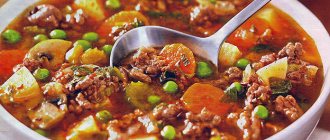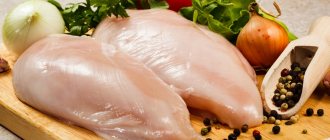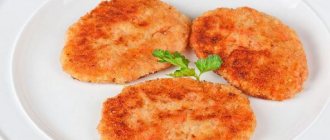How much protein is in a chicken breast is often a concern for those involved in bodybuilding. Chicken meat is recognized as one of the most dietary. That is why it attracts special interest. It is believed that the meat of this bird contains almost no fat, which is very important for those who are in a cutting mode, that is, when a person tries to lose weight through diets and physical activity.
The most dietary part of chicken is called the breast. And for good reason, because in 100 grams it contains about 2 grams of fat.
The nutritional value
Many athletes are concerned about the value of chicken fillet. This is due to the fact that during heavy training the amount of protein in food is very important. After all, this substance determines how the muscles of the body will be built and how quickly the muscles will recover.
That is, 1 kg. fillet, proteins contain about 230 grams, carbohydrates and fats are not contained at all.
The daily norm, with proper nutrition, for an athlete should be about three hundred grams. They try to distribute this norm into two doses. Also, this product will not be deposited in any places if it is eaten at night. Brisket is considered by all experts to be white meat. This suggests that the protein in this meat predominates over the fats, which are almost absent. If you choose chicken instead of an adult chicken, then no fat will enter your body at all.
Many vegetarians are very mistaken when they begin to claim that food of animal origin is not necessary for humans, forgetting that it is meat that contains vital elements.
Calorie content of chicken breast: nutritional value, BJU and how many calories are in chicken fillet
Chicken is recognized as one of the most popular sources of protein throughout the world and is considered a universal dietary product, which contains a large number of vitamins and microelements. So how much protein is in chicken breast, and how does it benefit athletes? Let's take a closer look!
Chicken meat is a dietary and easily accessible ingredient that is an integral part of the menu of athletes and diet supporters. The reason for this is the low amount of calories, carbohydrates and fats in the product. For people who care about their physical fitness, the high protein content of chicken fillet makes the meat a main component in the daily menu.
In this article we will look at:
- how much protein is contained in chicken fillet and what else this type of meat is rich in;
- the importance of healthy protein in athletes;
- the best cooking option is frying, boiling, stewing, baking or smoking;
- how much protein is in chicken besides the fillet;
- how to deliciously cook chicken breast meat: recipes.
A bodybuilder and chicken breast are an inseparable tandem. Bodybuilders and supporters of a healthy diet are well aware of the high protein content of chicken breast, which is why they so value its properties and richness in amino acids and protein compounds. In addition to protein, a wide range of vitamins, minerals and microelements is also of great value.
In bodybuilding, protein is used from natural products, and nutritional supplements with a large number of amino acids are also popular. Whichever source is preferred, protein products help increase the number of muscle fibers and make them better quality.
Chicken breast is the basis of a diet for weight loss and many adherents of a healthy diet and lifestyle. It is an excellent source of lean protein.
Dieters who consume enough protein will maintain muscle mass and a healthy metabolism.
However, calculating the amount of chicken breast per 100 grams and the number of kcal contained in a chicken breast can be a difficult task, since its nutritional value depends on many factors.
Table - Nutritional value of skinless and boneless chicken breast
| Serving size - 80 grams | |
| Daily Value per serving in %* |
| Total fat 2g | 10% |
| Saturated fat 2g | 9% |
| Polyunsaturated fat 0g | |
| Monounsaturated fat 1g | |
| Cholesterol 53mg | 18% |
| Sodium 46 mg | 2% |
| Potassium 159 mg | 3% |
| Carbohydrates 0.5 g | |
| Protein 29.8 g | |
| Vitamin A 0% Vitamin C 0% | |
| Calcium 1% Iron 4% | |
| *Based on a 2000 calorie diet |
Chicken breasts are a great source of protein and contain almost no fat or sodium. They also have zero grams of carbohydrates, making them the ultimate low-carb food available. The approximate glycemic index for chicken breast (raw, skinless, boneless) is zero. Because it is such a versatile food, it can easily be included in any healthy diet.
To calculate how many calories are in chicken breast, you need to consider the cooking method and additional sources of calories that may be used during cooking. First of all, it is affected by the size of the chicken breast. One serving usually weighs about 100 grams and is about the size of your palm.
Many packaged chicken breast portions, however, are much larger. So if you decide to use it, most likely your portion is larger.
Chicken breast is an excellent source of lean protein. Protein helps the body maintain existing muscle mass, as well as build new muscle mass if you are doing a strength training program.
Chicken breast also has an excellent chemical composition: it is a very good source of selenium, phosphorus, vitamin B6 and niacin. The amount of sodium may vary depending on the cooking method, but it is also generally very low.
You can purchase chicken breasts that are pre-cut and ready to use. Many grocery stores and wholesale warehouses also sell individually packaged frozen breasts. If you choose this option, check the label as they are often high in sodium.
When cooking with chicken, make sure to cook at the proper temperature for safety reasons.
Boneless chicken should be cooked at a temperature of 75 degrees Celsius, if there are bones, then at a temperature of 80 degrees. Be sure to thoroughly clean any surfaces that raw meat will come into contact with.
Chicken meat should be stored in the refrigerator. If frozen, it can last up to nine months.
The way you cook a chicken breast can add hundreds of calories to the total amount of calories and fat in the dish. The healthiest methods for processing meat are grilling, baking or boiling. Regular frying or sautéing in oil will add fat and calories.
In addition to this, adding ingredients such as olive oil, barbecue sauce or any other will increase the calorie content and fat content of the dish.
Need a quick and easy chicken breast dish? Breast with potatoes and vegetables can be prepared for future use on Sunday evening to provide yourself with dietary lunches for the week ahead. Pack each portion separately and keep it in the refrigerator, when you come home after a long day at work, they will be waiting for you, just take them out and heat them up.
However, remember that you can also use low-calorie chicken breast in a variety of dishes.
For example, low-carb stuffed chicken breasts are one way to enjoy lean protein if you're on a low-carb diet.
You can also add chicken breast to your favorite salad, soup, or make a pita pocket and fill it with vegetables and chicken for a healthy lunch or dinner.
Afterword
Remember that although chicken breast is a healthy low-calorie food, consuming too much of it can still lead to weight gain. Control your portions and have a nutrition plan that includes all your meals to achieve and maintain a healthy weight.
The benefits of chicken meat
Nutritionists around the world have long loved this product and are happy to recommend including it in any diet. Chicken meat is not just an excellent source of protein, but also a source of other beneficial substances such as:
- all B vitamins
- vitamin A
- vitamin PP
- vitamin C
- choline, which helps the adrenal glands and kidneys work, and also helps rid the liver of excess fats
- potassium, which helps stabilize blood pressure and has an effect on nerve impulses
- magnesium
- chlorine
- iron
- phosphorus
- sulfur
A very low level of fats and carbohydrates, as well as many useful qualities, give chicken meat every right to be a healthy product that helps:
- recover from serious illnesses and surgeries
- boosts immunity
- good for diseases of the digestive tract, including ulcers and stomach cancer
- This meat is good for preventing heart and vascular diseases
Proteins as the basis for growth and vital activity
Eating protein is the main way to obtain amino acids important for life. During the digestion process, foreign proteins are destroyed, after which they enter the acidic gastric environment, and are then exposed to enzymes. Proteins are broken down into amino acids: some of them are used to support the synthesis of their own molecules, and the rest, under the influence of chemical reactions, are broken down into glucose, which is an energy source.
Proteins play an important role in the full functioning of cells and the body as a whole. With their help, the main functions are performed:
- transport;
- motor;
- receptor;
- protective;
- signal;
- regulatory;
- enzymatic.
Useful properties of boiled breast
Let's start with the fact that the energy value of a cooked product is absolutely no different from a raw one. This means that protein is also preserved in this meat.
The boiled fillet contains the same set of useful vitamins and minerals. For eating boiled fillet, it is very suitable for people of all age categories. It can be given to both young children and elderly people. It is very good in the diet of an athlete and in the menu of those who are on a diet.
Using fillet in this form, you will never go hungry. It goes well with many side dishes, is very popular in many salads and is suitable for making rolls, sandwiches, rolls, sausages, homemade snacks and much more. That is, even while on a very strict diet, with the help of this product you can perfectly diversify your diet without compromising the calorie content of your dishes.
Steamed chicken beneficial properties
It is highly recommended to cook many foods using steam. It is not only tasty, but also undoubtedly healthy. Steamed food is an opportunity to preserve all the beneficial properties of vegetables and meat without losing the taste of the product.
Steaming meat is recommended for athletes, those losing weight, and people suffering from certain diseases; this method is also suitable for those who simply care about their health.
Steaming is quite simple and the whole process does not require any specific skills. Sirloin prepared in this way can be served with various side dishes and vegetables.
healthy recipes, table of fats and carbohydrates
Proteins as the basis for growth and vital activity
Protein is the building block of the human body. Thanks to amino acids, muscles grow and energy and hormonal metabolism occurs.
For a productive life, the body needs more than 30 amino acids. 22 of them are replaceable; the body synthesizes them on its own. Essential amino acids are not produced in the body, so they must be obtained from food. Meat, fish and dairy foods are the main suppliers of protein.
The most dietary product is white meat. When compiling a diet, you need to calculate how much protein is in the chicken breast and other parts of the carcass.
BJU in raw, boiled, smoked and fried chicken breast
When calculating the diet, energy value and macronutrient composition are taken into account.
A person’s need for amino acids depends on:
- gender;
- age;
- health conditions;
- level and frequency of physical activity.
The uniqueness of white fillet lies in its balanced BJU and chemical composition.
Low lipid content, almost complete absence of carbohydrates, low calorie content and a record percentage of essential amino acids allow breast meat to be used in nutrition for various purposes, be it muscle growth or a fat-burning diet.
To calculate daily consumption, weigh the portions, determine the body's needs based on the quantitative composition of nutrients and the balance of macronutrients per 100 g of breast:
- the energy value of a steamed dish is 114 kcal;
- proteins – 24 g;
- fats – 2 g;
- carbohydrates – 0.1 g.
Be sure to read:
Dietary meat: calorie table for different types and recipes for them
The average daily protein requirement can be met by consuming 80 g of pure protein. 300 g of meat will completely cover the needs of the human body with average activity.
Athletes and people involved in heavy physical labor should calculate the norm individually, depending on the level of stress.
Long-term nutrition programs or constant adherence to the principles of proper nutrition imply creating a menu of healthy and varied dishes. If you are tired of boiled chicken, you can fry or bake this product.
The calorie content and balance of BZHU will change, take this fact into account when selecting your diet.
| Method of preparation/KBJU | Raw | Boiled | Smoked | Fried |
| Calories, kcal | 137 | 113 | 117 | 162 |
| Amino acids, g | 24 | 28 | 18 | 25 |
| Lipids, g | 2 | 1.8 | 5 | 8 |
| Carbohydrates. G | 0.4 | 0.5 | 0.1 | 1.3 |
Raw meat contains more water, and when boiling and other cooking methods, the liquid evaporates, so the macronutrient content of cooked meals differs from raw meat.
Why breast fillet is better than whole chicken
Let's start with the fact that this is a complete white meat, which has a very high degree of benefit. It contains the least amount of fat and carbohydrates, if not to say that they are not there at all. This meat does not create discomfort in the digestive tract and is very easy to digest and assimilate.
Another benefit of this cut of chicken is that it doesn't take very long to cook. Also, a kilogram of this product is quite affordable in price and is suitable for a wallet of any thickness.
The finished breast retains all the vitamins and minerals that are essential for the body. For athletes, this product is absolutely irreplaceable, as it is an excellent source of pure protein, which helps make it easier to endure difficult workouts.
Also, this meat is good for drying; it will help not harm your health by combining heavy physical activity with a diet.
To prevent the meat from seeming dry, the main thing is to learn how to cook it correctly. If you are trying to reduce your salt intake, white meat can be served with soy sauce without adding salt when cooking it. If you want to get a juicy breast, simmer it over low heat with vegetables or make steamed cutlets with a large addition of onions, it will give juiciness and improve the taste.
How much protein is in chicken breast
How much protein is in a chicken breast is often a concern for those involved in bodybuilding. Chicken meat is recognized as one of the most dietary. That is why it attracts special interest. It is believed that the meat of this bird contains almost no fat, which is very important for those who are in a cutting mode, that is, when a person tries to lose weight through diets and physical activity.
The most dietary part of chicken is called the breast. And for good reason, because in 100 grams it contains about 2 grams of fat.
The nutritional value
Many athletes are concerned about the value of chicken fillet. This is due to the fact that during heavy training the amount of protein in food is very important. After all, this substance determines how the muscles of the body will be built and how quickly the muscles will recover.
That is, 1 kg. fillet, proteins contain about 230 grams, carbohydrates and fats are not contained at all.
The daily norm, with proper nutrition, for an athlete should be about three hundred grams. They try to distribute this norm into two doses. Also, this product will not be deposited in any places if it is eaten at night. Brisket is considered by all experts to be white meat. This suggests that the protein in this meat predominates over the fats, which are almost absent. If you choose chicken instead of an adult chicken, then no fat will enter your body at all.
Many vegetarians are very mistaken when they begin to claim that food of animal origin is not necessary for humans, forgetting that it is meat that contains vital elements.
How to cook poultry
Meat can be consumed with benefits for the body in the following forms:
- for a couple
- boiled
- stewed
not advisable:
- fried
- grill
Cooking chicken is very simple. This process does not take much time and does not require any special skills. Chicken fillet can be consumed as a separate dish or in combination with vegetables, cereals, pasta, and so on. The boiled product can be added to salads.
The benefits of chicken meat
Nutritionists around the world have long loved this product and are happy to recommend including it in any diet. Chicken meat is not just an excellent source of protein, but also a source of other beneficial substances such as:
- all B vitamins
- vitamin A
- vitamin PP
- vitamin C
- choline, which helps the adrenal glands and kidneys work, and also helps rid the liver of excess fats
- potassium, which helps stabilize blood pressure and has an effect on nerve impulses
- magnesium
- chlorine
- iron
- phosphorus
- sulfur
A very low level of fats and carbohydrates, as well as many useful qualities, give chicken meat every right to be a healthy product that helps:
- recover from serious illnesses and surgeries
- boosts immunity
- good for diseases of the digestive tract, including ulcers and stomach cancer
- This meat is good for preventing heart and vascular diseases
Useful properties of boiled breast
Let's start with the fact that the energy value of a cooked product is absolutely no different from a raw one. This means that protein is also preserved in this meat.
The boiled fillet contains the same set of useful vitamins and minerals. For eating boiled fillet, it is very suitable for people of all age categories. It can be given to both young children and elderly people. It is very good in the diet of an athlete and in the menu of those who are on a diet.
Using fillet in this form, you will never go hungry. It goes well with many side dishes, is very popular in many salads and is suitable for making rolls, sandwiches, rolls, sausages, homemade snacks and much more. That is, even while on a very strict diet, with the help of this product you can perfectly diversify your diet without compromising the calorie content of your dishes.
Steamed chicken beneficial properties
It is highly recommended to cook many foods using steam. It is not only tasty, but also undoubtedly healthy. Steamed food is an opportunity to preserve all the beneficial properties of vegetables and meat without losing the taste of the product.
Steaming meat is recommended for athletes, those losing weight, and people suffering from certain diseases; this method is also suitable for those who simply care about their health.
Steaming is quite simple and the whole process does not require any specific skills. Sirloin prepared in this way can be served with various side dishes and vegetables.
Why breast fillet is better than whole chicken
Let's start with the fact that this is a complete white meat, which has a very high degree of benefit. It contains the least amount of fat and carbohydrates, if not to say that they are not there at all. This meat does not create discomfort in the digestive tract and is very easy to digest and assimilate.
Another benefit of this cut of chicken is that it doesn't take very long to cook. Also, a kilogram of this product is quite affordable in price and is suitable for a wallet of any thickness.
The finished breast retains all the vitamins and minerals that are essential for the body. For athletes, this product is absolutely irreplaceable, as it is an excellent source of pure protein, which helps make it easier to endure difficult workouts.
Also, this meat is good for drying; it will help not harm your health by combining heavy physical activity with a diet.
To prevent the meat from seeming dry, the main thing is to learn how to cook it correctly. If you are trying to reduce your salt intake, white meat can be served with soy sauce without adding salt when cooking it. If you want to get a juicy breast, simmer it over low heat with vegetables or make steamed cutlets with a large addition of onions, it will give juiciness and improve the taste.
How much protein is in 1 kg of chicken breast. How much protein is in chicken breast
CHEMICAL COMPOSITION AND NUTRITIONAL ANALYSIS
Nutritional value and chemical composition of “Chicken breast (fillet)”.
The table shows the nutritional content (calories, proteins, fats, carbohydrates, vitamins and minerals) per 100 grams of edible portion.
| Nutrient | Quantity | Norm** | % of the norm in 100 g | % of the norm in 100 kcal | 100% normal |
| Calorie content | 113 kcal | 1684 kcal | 6.7% | 5.9% | 1490 g |
| Squirrels | 23.6 g | 76 g | 31.1% | 27.5% | 322 g |
| Fats | 1.9 g | 60 g | 3.2% | 2.8% | 3158 g |
| Carbohydrates | 0.4 g | 211 g | 0.2% | 0.2% | 52750 g |
| Water | 73 g | 2400 g | 3% | 2.7% | 3288 g |
| Ash | 1.1 g | ~ | |||
| Vitamins | |||||
| Vitamin B1, thiamine | 0.07 mg | 1.5 mg | 4.7% | 4.2% | 2143 g |
| Vitamin B2, riboflavin | 0.07 mg | 1.8 mg | 3.9% | 3.5% | 2571 g |
| Vitamin RR, NE | 7.69 mg | 20 mg | 38.5% | 34.1% | 260 g |
| Niacin | 10.9 mg | ~ | |||
| Macronutrients | |||||
| Potassium, K | 292 mg | 2500 mg | 11.7% | 10.4% | 856 g |
| Calcium, Ca | 8 mg | 1000 mg | 0.8% | 0.7% | 12500 g |
| Magnesium, Mg | 86 mg | 400 mg | 21.5% | 19% | 465 g |
| Sodium, Na | 60 mg | 1300 mg | 4.6% | 4.1% | 2167 g |
| Phosphorus, Ph | 171 mg | 800 mg | 21.4% | 18.9% | 468 g |
| Chlorine, Cl | 77 mg | 2300 mg | 3.3% | 2.9% | 2987 g |
| Microelements | |||||
| Iron, Fe | 1.4 mg | 18 mg | 7.8% | 6.9% | 1286 g |
| Yod, I | 6 mcg | 150 mcg | 4% | 3.5% | 2500 g |
| Cobalt, Co | 9 mcg | 10 mcg | 90% | 79.6% | 111 g |
| Manganese, Mn | 0.02 mg | 2 mg | 1% | 0.9% | 10000 g |
| Copper, Cu | 80 mcg | 1000 mcg | 8% | 7.1% | 1250 g |
| Molybdenum, Mo | 11 mcg | 70 mcg | 15.7% | 13.9% | 636 g |
| Fluorine, F | 130 mcg | 4000 mcg | 3.3% | 2.9% | 3077 g |
| Chromium, Cr | 25 mcg | 50 mcg | 50% | 44.2% | 200 g |
| Zinc, Zn | 1.3 mg | 12 mg | 10.8% | 9.6% | 923 g |
| Essential amino acids | |||||
| Arginine* | 1.82 g | ~ | |||
| Valin | 1.3 g | ~ | |||
| Histidine* | 1.32 g | ~ | |||
| Isoleucine | 1.13 g | ~ | |||
| Leucine | 1.98 g | ~ | |||
| Lysine | 2.64 g | ~ | |||
| Methionine | 0.45 g | ~ | |||
| Methionine + Cysteine | 0.87 g | ~ | |||
| Threonine | 1.11 g | ~ | |||
| Tryptophan | 0.38 g | ~ | |||
| Phenylalanine | 1.06 g | ~ | |||
| Phenylalanine+Tyrosine | 1.96 g | ~ | |||
| Nonessential amino acids | |||||
| Alanin | 1.3 g | ~ | |||
| Aspartic acid | 1.94 g | ~ | |||
| Hydra |
Why does the body need protein?
It functions as a building material for tissues and replenishes energy reserves.
Protein is not able to be stored “for later”; its reserves constantly need to be replenished. Protein deficiency leads to loss of your own protein tissue. The generally accepted daily protein intake is from 0.8 to 1.5 g of protein per 1 kg of body weight. But this figure is relevant only for ordinary people; athletes and people involved in fitness, due to their loads, need much more protein.
